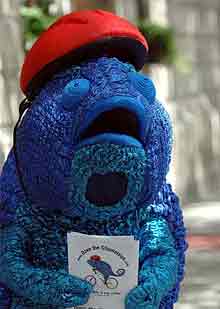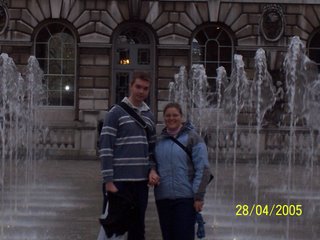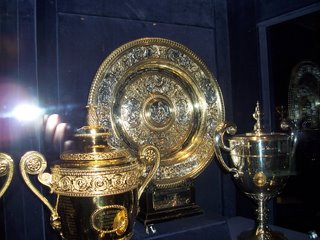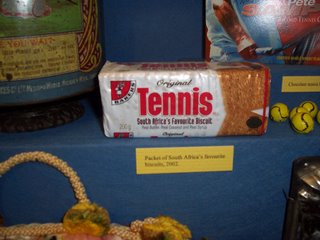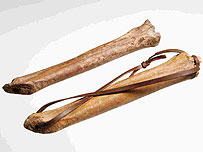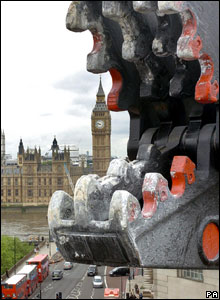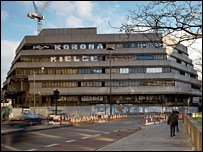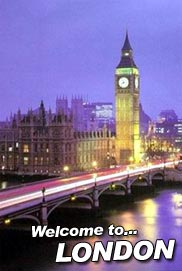
June 23 is the 174th day of the year (175th in leap years) in the Gregorian Calendar, with 191 days remaining.
Events
1305 - Flemish-French peace treaty signed at Athis-sur-Orge.
1314 - Start of the Battle of Bannockburn south of Stirling, Edward II of England & Robert I of Scotland met in battle. Scotland won and Edward fled the field and Scotland.
1532 - Henry VIII & François I sign secret treaty against Emperor Charles V.
1611 - The mutinous crew of Henry Hudson's fourth voyage sets Henry, his son and seven loyal crew members adrift in an open boat in the Atlantic Ocean; they are never heard from again.
1661 - Marriage contract between Charles II of England & Catharina of Portugal.
1683 - William Penn signs friendship treaty with Lenni Lenape Indians in Pennsylvania.
1713 - French residents of Acadia given one year to declare allegiance to Britain or leave Nova Scotia Canada. [1]
1757 - Battle of Plassey - 3000 British troops under Robert Clive defeat a 50,000 strong Indian army under Siraj Ud Daulah at Plassey.
1758 - Seven Years' War: Battle of Krefeld - British forces defeat French troops at Krefeld in Germany.
1760 - Seven Years' War: Battle of Landshut - Austria beats Prussia.
1794 - Empress Catherine II grants Jews permission to settle in Kiev.
1810 - John Jacob Astor forms the Pacific Fur Company.
1812 - Napoleon begins the famous offensive on Russia, which fails horribly.
1812 - War of 1812: Great Britain had revoked the restrictions on American commerce, thus eliminating one of the chief reasons for going to war.
1858 - Six-year-old Edgardo Mortara is seized by Papal authorities.
1860 - The US Congress establishes the Government Printing Office.
1865 - American Civil War: At Fort Towson in Oklahoma Territory Confederate General Stand Watie surrenders the last significant rebel army.
1887 - The Rocky Mountains Park Act becomes law in Canada, creating that nation's first national park, Banff National Park. [2]
1888 - Frederick Douglass is the first African-American nominated for US president.
1894 - International Olympic Committee is founded at the Sorbonne, Paris, at the initiative of Baron Pierre de Coubertin.
1919 - Defeat of German forces at Cesis in northern Latvia during Estonian Liberation War, now celebrated annually as Estonian Victory Day.
1931 - Wiley Post and Harold Gatty take off from Roosevelt Field, Long Island in an attempt to accomplish the first round-the-world flight in a single-engine plane. [3]
1938 - The Civil Aeronautics Act is signed into law, forming the Civil Aeronautics Authority in the United States.
1938 - Marineland opens near St. Augustine, Florida.
1940 - World War II: German leader Adolf Hitler surveys newly defeated Paris in now occupied France.
1941 - Lithuanian Activist Front initiates Lithuanian 1941 independence from the Soviet Union; it lasted only briefly as the Nazis occupied Lithuania a few weeks later.
1944 - Thomas Mann becomes a US citizen.
1947 - The United States Senate follows the United States House of Representatives in overriding U.S. President Harry S. Truman's veto of the Taft-Hartley Act.
1955 - In the Strahov Stadium in Prague the 1st all-national Spartakiáda begins.
1956 - Gamal Abdel Nasser elected president of Egypt.
1958 - The Dutch Reformed Church accepts women ministers.
1959 - Convicted Manhattan Project spy Klaus Fuchs is released after only nine years in prison and allowed to emigrate to Dresden, East Germany (where he resumed a scientific career).
1959 - A fire in a resort hotel in Stalheim, Norway kills 34 people.
1967 - Cold War: U.S. President Lyndon B. Johnson meets with Soviet Premier Aleksei Kosygin in Glassboro, New Jersey for the three-day Glassboro Summit Conference.
1968 - 74 are killed and 150 injured in a soccer stampede towards a closed exit in a Buenos Aires stadium.
1969 - Warren E. Burger is sworn in as chief justice of the United States Supreme Court by retiring chief Earl Warren.
1972 - Watergate Scandal: U.S. President Richard M. Nixon and White House chief of staff H. R. Haldeman are taped talking about using the Central Intelligence Agency to obstruct the Federal Bureau of Investigation's investigation into the Watergate break-ins.
1985 - A Boeing 747 carrying Air India Flight 182 blew-up 31,000 feet (9500 m) above the Atlantic Ocean, South of Ireland, killing all 329 aboard.
1990 - Moldavia declares independence.
1991 - Sonic the Hedgehog, one of the most popular video game characters in history, makes his debut in his self-titled video game.
1996 - The Nintendo 64, successor to the Super Nintendo Entertainment System is released in Japan.
Births
47 BC - Pharaoh Ptolemy XV of Egypt
1433 - Francis II, Duke of Brittany (d. 1488)
1456 - Margaret of Denmark, wife of James III of Scotland (d. 1486)
1534 - Oda Nobunaga, Japanese warlord (d. 1582)
1596 - Johan Banér, Swedish soldier (d. 1641)
1612 - André Tacquet, Belgian mathematician (d. 1660)
1668 - Giambattista Vico, Italian philosopher and historian (d. 1744)
1683 - Etienne Fourmont, French orientalist (d. 1745)
1716 - Fletcher Norton, 1st Baron Grantley, English politician (d. 1789)
1750 - Dolomieu, French geologist (d. 1801)
1763 - Josephine de Beauharnais, Empress of France (d. 1814)
1800 - Karol Marcinkowski, Polish physician and social activist (d. 1846)
1824 - Carl Reinecke, German musician and composer (d. 1910)
1884 - Cyclone Taylor, professional ice hockey player (d. 1979)
1888 - Bronson M. Cutting, American politician
1889 - Anna Akhmatova, Russian poet (d. 1966)
1894 - Alfred Kinsey, American entomologist and sexologist (d. 1956)
1894 - King Edward VIII of the United Kingdom (d. 1972)
1903 - Paul Joseph James Martin, Canadian politician (d. 1992)
1907 - James Meade, English economist, Nobel Prize laureate (d. 1995)
1909 - David Lewis, Canadian lawyer and politician (d. 1981)
1910 - Jean Anouilh, French dramatist (d. 1987)
1910 - Gordon B. Hinckley, president of The Church of Jesus Christ of Latter-day Saints
1910 - Milt Hinton, American jazz bassist (d. 2000)
1912 - Alan Turing, English mathematician (d. 1954)
1916 - Len Hutton, English cricketer (d. 1990)
1919 - Muhammad Boudiaf, Algerian political leader (d. 1992)
1927 - Bob Fosse, American choreographer (d. 1987)
1929 - June Carter Cash, American singer (d. 2003)
1935 - Maurice Ferre, former Puerto Rican mayor of Miami
1936 - Costas Simitis, Prime Minister of Greece
1937 - Martti Ahtisaari, President of Finland
1940 - Adam Faith, English singer and actor (d. 2003)
1940 - Lord Irvine of Lairg, Scottish Lord Chancellor
1940 - Wilma Rudolph, American runner (d. 1994)
1940 - Stuart Sutcliffe, first bassist with The Beatles (d. 1962)
1941 - Robert Hunter, American lyricist and poet (The Grateful Dead)
1943 - James Levine, American conductor
1943 - Vint Cerf, American Internet pioneer
1946 - Ted Shackleford, American actor
1947 - Bryan Brown, Australian actor
1948 - Clarence Thomas, U.S. Supreme Court Justice
1948 - Darhyl S. Ramsey, American author and professor of music education
1955 - Glenn Danzig, American musician (The Misfits and Danzig)
1955 - Jean Tigana, French footballer
1957 - Frances McDormand, American actress
1961 - Zoran Janjetov, Serbian comic artist
1962 - Chuck Billy, American singer
1963 - Colin Montgomerie, Scottish golfer
1964 - Joss Whedon, American producer, director, and screenwriter
1964 - Yun Lou, Chinese gymnast
1965 - Paul Arthurs, British guitarist (Oasis)
1966 - Chico DeBarge, American musician (DeBarge)
1971 - Felix Potvin, Canadian professional hockey goaltender
1972 - Selma Blair, American actress
1972 - Zinedine Zidane, French footballer
1973 - Marie N, Latvian singer
1975 - Kevin Dyson, American football player
1976 - Anca Marks - die coolste girl in die hele UK!
1976 - Brandon Stokley, American football player
1976 - Patrick Monahan, British comedian
1976 - Patrick Vieira, French footballer
1977 - Jason Mraz, American singer and songwriter
1979 - LaDainian Tomlinson, American football player
1980 - Ramnaresh Sarwan, Guyanese cricketer
Holidays and observances
Jāņi (Līgo) - Latvia
Midsummer's Eve, Christianized the eve of the feast of Saint John the Baptist, is celebrated in much of Northern Europe and the British Islands
Victory Day - Estonia
Saint Jonas Day - Lithuania
Father's Day - Poland
